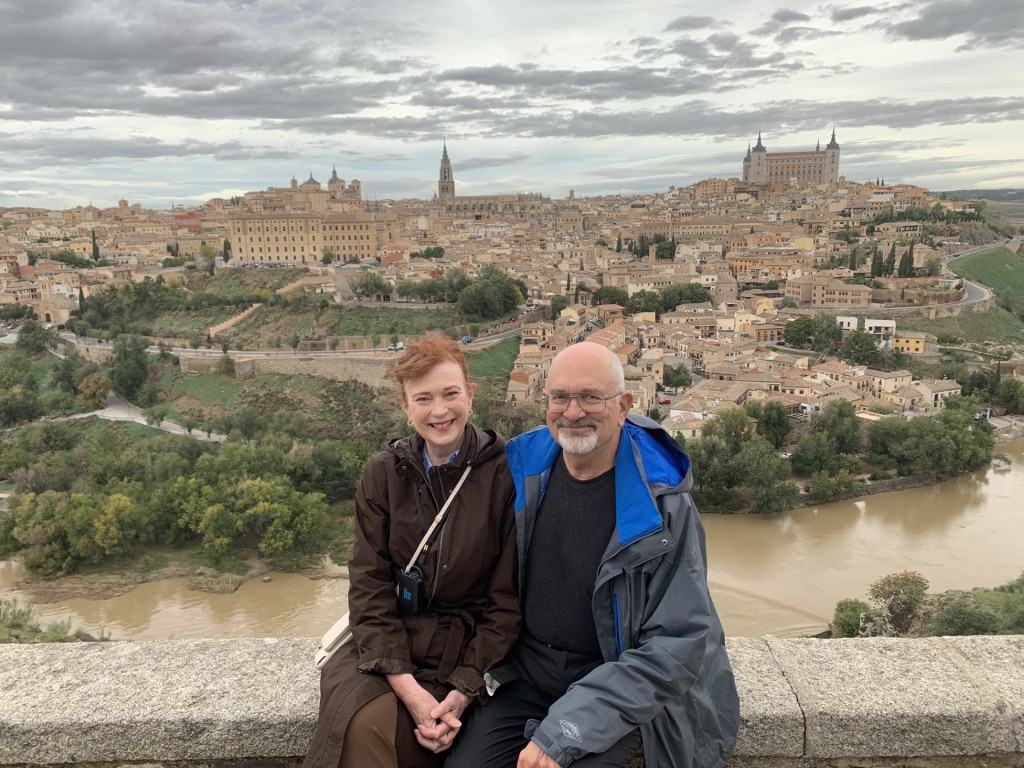
Five-hundred-year-old buildings abound in Europe despite the destruction of wars and the natural tests of time. Some cities, like Porto and Seville, have entire districts of Renaissance and older buildings. Toledo is one of the few cities almost entirely of such edifices.
There are two reasons for this. First the Tagus River clings to three of Toledo’s sides, literally leaving no room for new construction. The Tagus here is a long way from when we first met it at Lisbon, but it is still a wide, fast-moving river.
Spanish King Philip II also indirectly bears responsibility for Toledo’s preservation. Philip’s father, Charles V, didn’t have a capital city, but rather traveled throughout Spain, the Low Countries, and the rest of his empire. Nonetheless, he ruled from Toledo no less than fifteen times, making it a primary residence. Toledo also was the seat of one of the oldest archdioceses in Spain, dating back to 313 A.D.
Philip II moved his main residence from Toledo to Madrid in 1562, six years after his father abdicated and Philip became king. (Madrid at this time had perhaps twenty thousand inhabitants and was a fraction of Toledo’s size.) Philip’s reasons for doing so are still debated. He was probably motivated in part by a desire to distance himself from the church’s influence. Also, Madrid’s weather is more moderate than that of Toledo.
Toledo remained largely unchanged after the court’s departure, and Toledo’s buildings and art gives us a glimpse into the past.
Toledo’s natural defenses led to its being founded centuries before Christ. Its strategic location in Iberian led to it being one of the first Moslem cities to fall in 1085 during the Reconquista.
Toledo Cathedral was worth the visit. Yes, another church. I was getting a bit tired of churches. This cathedral, however, was different than those visited before. It was built on the site of a mosque, but unlike in Seville and Cordoba, no evidence of the former mosque remains, although the cloister exhibits a Moorish influence. Also, it is one of the few cathedrals in Spain in the Gothic style. I could write for pages about the church, but this blog is not meant to be a travelogue. What best captured my attention were two things.
First, a unique aspect of the church is its stained-glass windows, which range from four hundred to seven hundred years old. These are magnificent to see, and we are blessed that they have survived all these years. Years ago, I did some stained-glass work, which makes me appreciate the effort put into the windows.
Second is a Baroque altarpiece call El Transparente. Cathedral altarpieces by their nature are over-the-top, each seemingly attempting to outdo one another. What makes this one special is that in the 1700’s a skylight was constructed to illuminate the Italian marble altarpiece. The streaming light seems to explode upon the altarpiece. Evidently two Cardinals must have thought the same, as their tombs are there. Suspended from the ceiling in mid-air above their tombs are their red cardinal hats…which for some reason makes me think of Harry Potter magical hats. The half hour I spent in a chapel of the church of Santo Tomé was some of my best spent time of the trip. This bare room had an alcove at one end with a tomb. Above the tomb is a masterpiece of Domḗnikos Theotokópoulos, best known as El Greco. The huge nearly sixteen-foot-high by twelve-foot-wide painting The Burial of Count Orgaz captivates me. There is so much happening in the painting with heaven above and earth below. Its style seems thoroughly modern to me.
Picture is of Teresa and I at an overlook of Toledo.
